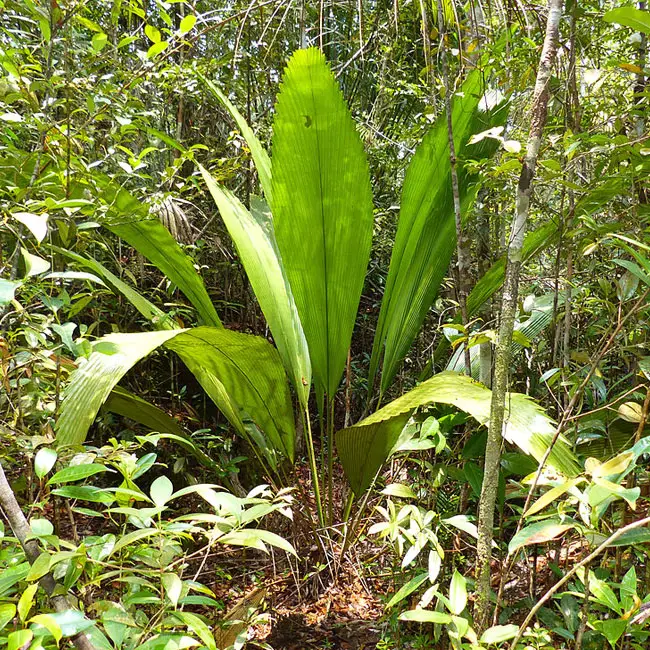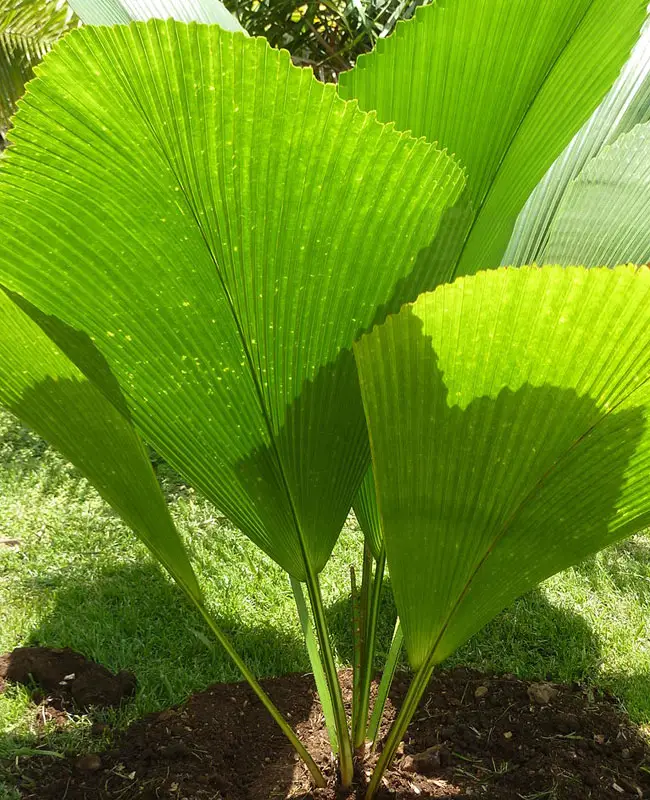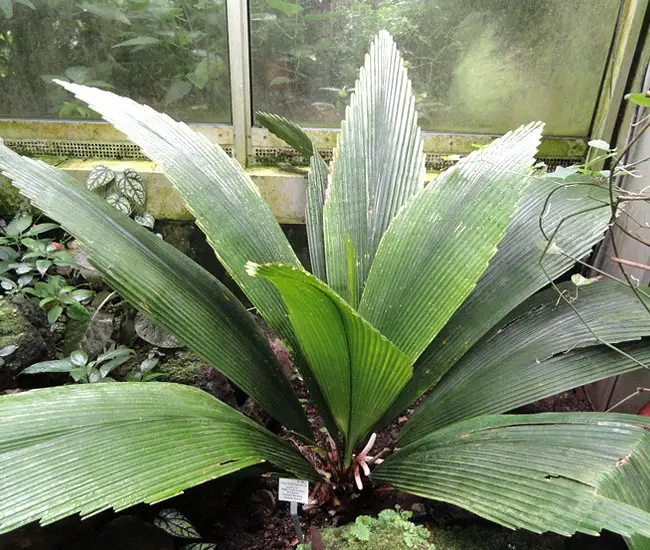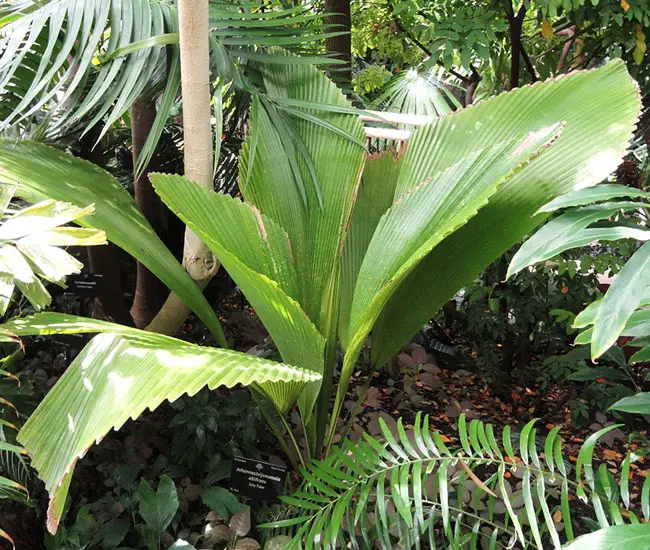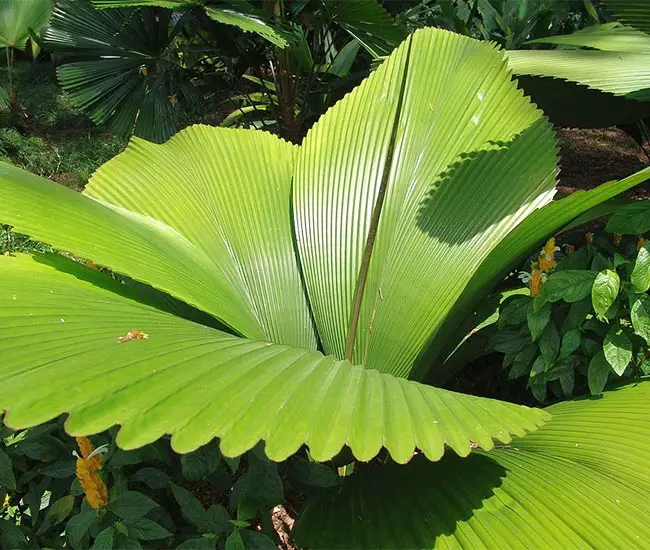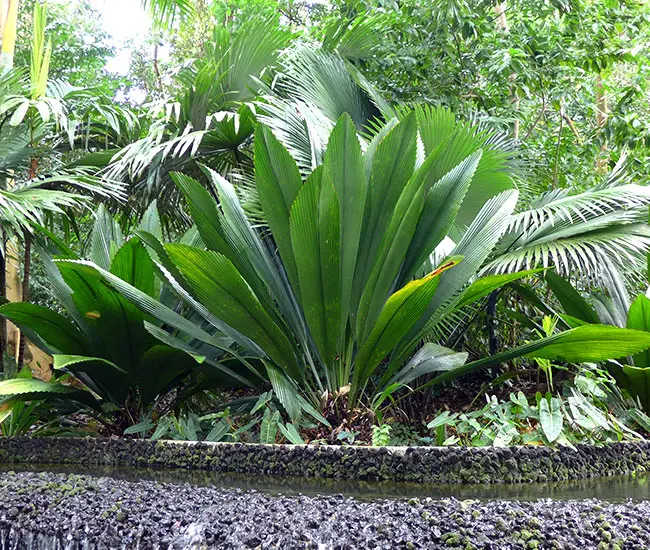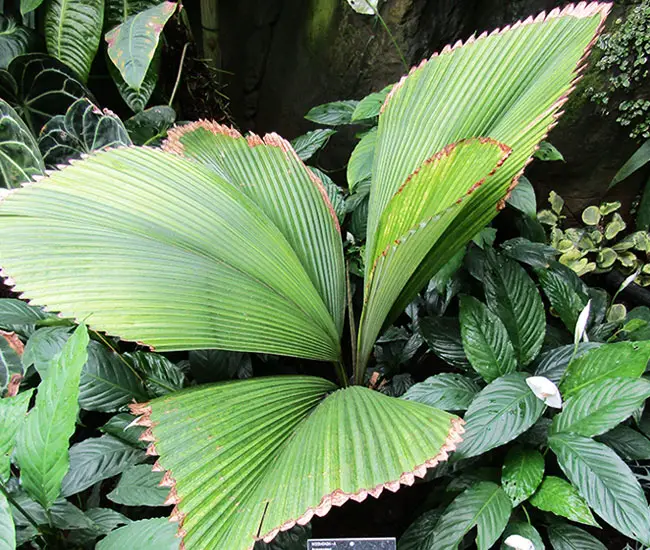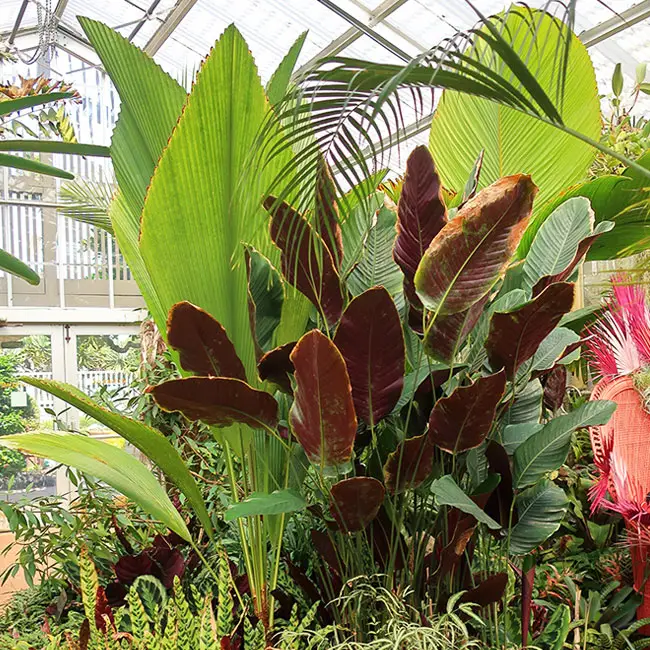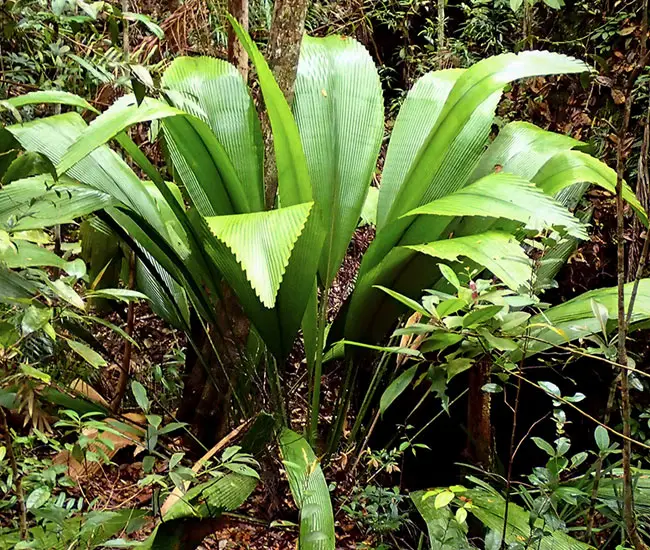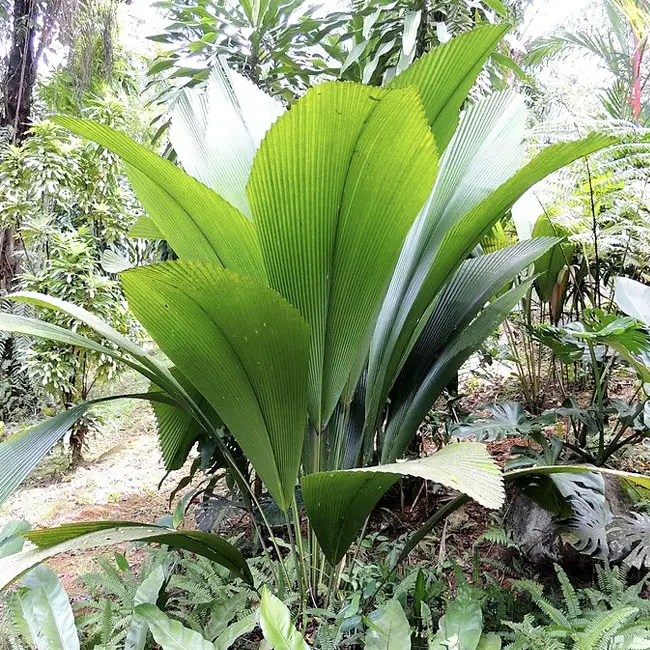
The Diamond Joey Palm, scientifically known as Johannesteijsmannia altifrons, is a captivating palm species prized for its striking appearance and elegant demeanor.
Originating from the lush regions of Southeast Asia, particularly Thailand and Malaysia, this palm has gained popularity among plant enthusiasts and landscapers for its unique characteristics.
At the heart of the Diamond Joey Palm’s allure lies its impressive fronds, which set it apart from other palm varieties. These fronds, resembling delicate, intricately cut diamonds, are the palm’s namesake and defining feature.
Each frond is a work of art, with deeply divided leaflets that radiate outward in a symmetrical pattern, creating a mesmerizing visual display.
Quick Facts:
| Scientific name: | Johannesteijsmannia altifrons |
| Common names: | The Joey Palm is also known as Diamond Joey Palm, Diamond Joey. |
| Origin: | This palm is native to Southeast Asia. |
| Growth Rate: | Slow to Moderate. Up to 10 – 20 ft tall and 10 -15 ft wide. |
| Cold Tolerance: | USDA Zones 9b (25 to 30 F) to 11 (above 40 F) |
| Light Req: | Shade to partial shade. |
| Water Req: | Moderate |
| Soil Req: | Slightly acidic to neutral soil with a pH range between 6.0 and 7.0. Soil pH |
| Fruit: | It produces creamy flowers that are followed by fruits. |
| Propagation: | By seed |
Joey Palm Appearance
The Joey Palm has a slender trunk that typically reaches heights of up to 20 feet in its native habitat, though it often remains smaller when cultivated. The trunk is smooth, grayish, and unadorned, allowing the focus to remain on the striking fronds.
The foliage of the Joey Palm is a rich, glossy green, which contrasts beautifully with the intricate diamond-shaped leaflets. The vibrant green color adds to its visual appeal.
The most striking feature of the Diamond Joey Palm is its fronds. The fronds are large, typically measuring 4 to 6 feet in length, and they are deeply divided into numerous segments.
These segments are arranged in a symmetrical, fan-like pattern, creating the appearance of intricately cut diamonds. The leaflets themselves are elongated and slender, tapering to a point, and they radiate outward from the central petiole, giving the fronds a delicate and graceful appearance.
Flowers and Fruits of the Joey Palm
The flowers of the Diamond Joey Palm are relatively small and inconspicuous. They are typically greenish to cream-colored and can be found on an inflorescence that emerges among the palm’s large, decorative fronds.
These flowers are often concealed by the foliage and are not a prominent ornamental feature. The flowering period varies but is generally during the warmer months, depending on environmental conditions and the palm’s health and age.
The fruits of the Diamond Joey Palm are small and oval-shaped, measuring approximately 1 to 1.5 inches in length. They start off green and eventually mature to a dull orange or reddish-brown hue.
These fruits tend to grow in clusters on the palm’s inflorescence, which may be partially hidden within the palm’s fronds. While not typically grown for their fruit, these palms produce seeds within the fruits.
If you wish to propagate Joey Palms, collecting and germinating the seeds found in the fruits is the standard method.
Caring for the Joey Palm
It thrives in filtered sunlight or partial shade. Avoid direct sunlight, which can harm its delicate fronds. When grown indoors, ensure it receives ample but indirect natural light.
During the rainy season, trust the natural showers to hydrate your palm, but during drier periods, monitor the soil. When the top layer feels dry, tenderly water it, ensuring that the soil remains consistently moist but not soggy, mimicking its rainforest habitat.
Fertilize with a slow-release, balanced fertilizer as the growing season beckons in spring and extend your care into early autumn. This organic nourishment weaves its way into the roots, nurturing the Joey Palm’s growth.
It can tolerate mild cold spells but prefers to dwell within the warmth of 65°F to 80°F (18°C to 27°C). Should frosty winter gusts threaten, consider sheltering your palm or providing extra insulation.
Pruning, if ever needed, aims to highlight its natural beauty. Remove any browning or damaged fronds to allow fresh greenery to flourish.
If you’re interested in propagating your palm, you can collect and germinate the seeds found in its fruits. While this method may be slow, it is the most reliable means of propagating this particular palm species.
Joey Palm Pictures
